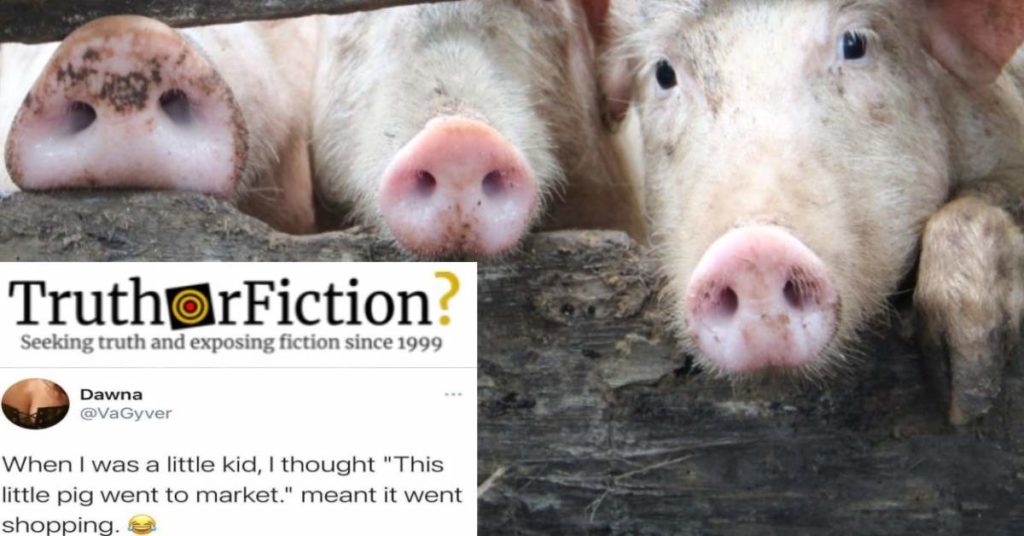Adults reading social media got a jolt to their understanding of childrens’ stories in February 2021, as speculation emerged around the nursery rhyme, “This Little Piggy.”
It didn’t take much. Just one Twitter post saying, “When I was a little kid, I thought ‘This little pig went to market.’ meant it went shopping”:
The tweet has been widely shared since it was first published on February 9 2021. It has also spread on Facebook, as a photograph posted on a meme-centric page proved equally popular.
The take on the story — that the “piggie” in question was actually being slaughtered and sold, rather than going shopping — has not been confirmed, but it has spread online in the past. As the Huffington Post reported in 2018, another Twitter user (since suspended) sparked the same dark interpretations when they wrote, “I’m 22 years old & I just realized that ‘This little piggy went to the market’ doesn’t mean he went food shopping”:
That tweet quickly went viral — a retweet from author Roxane Gay didn’t hurt — as more people realized the possibly “devastating” interpretation. This little piggy was sold to the slaughterhouse, this little piggy’s turn will come, this little piggy was forced to eat his cow friend to get fattened up, this little piggy starved, and this little piggy screamed in terror all the way home to await his fate.
Bye, childhood.
However, the story also noted that the darker interpretation of the nursery rhyme was prevalent on “anecdotal websites,” and not sources with expertise on that type of story.
Both NBC News and BBC have published stories covering hidden, often dark meanings in other nursery rhymes like “Humpty Dumpty” and “Rock-a-bye Baby,” among others. A music historian, Jeremy Barlow, told the BBC:
The innocent tunes do draw attention away from what’s going on in the rhyme; for example the drowned cat in “Ding Dong Bell,” or the grisly end of the frog and mouse in “A Frog He Would A-Wooing Go.” Some of the shorter rhymes, particularly those with nonsense or repetitive words, attract small children even without the tunes. They like the sound and rhythm of the words; of course the tune enhances that attraction, so that the words and the tune then become inseparable. The result can be more than the sum of the parts.
However, neither of those stories mentioned a hidden meaning behind “This Little Piggy.” The first complete version of the nursery rhyme was reportedly published in The Famous Tommy Thumb’s Little Story-Book in the 18th century.

